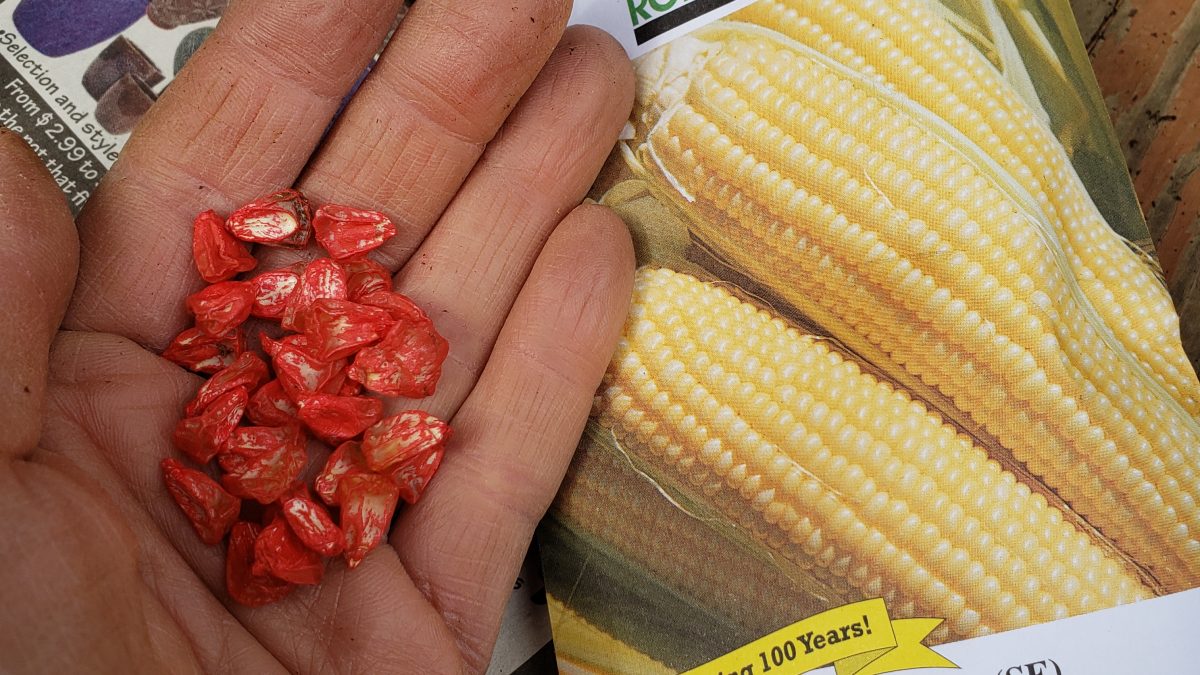
Hybrid seed can be problematic for saving and future growing
I don’t know about you but I find there is something magical about the arrival of seed packets in the mail. It’s like your birthday every time you open the package to find these beautiful envelopes containing all this potential life and hear the little seeds rattling around inside.
Now, if you returned from vacation and found your garden taken hostage by weeds, or if you’re feeling it’s too hot to be much motivated, you’re not alone in the dog days of summer.
Mid-summer typically is a time when seed inventory in stores is depleted. Retailers at big box stores often have clearance sales and traditionally, those items are being hauled out to make room for other inventory. And if you go online, many items are out of stock on seed sites.
However, I am taking the time now to do inventory of my seeds, organize what I have, and make note of and order what I want for next spring if I can’t save the seeds from foods I’ve already grown. I am purchasing seeds now and where they have sold out I am signing up to be notified as soon as the inventory is back in.
Why now?
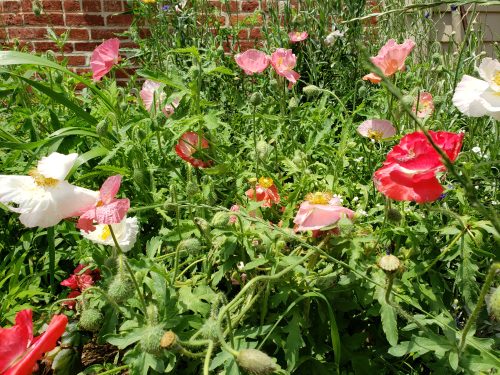

You may categorize pollinators and aesthetics separately from edibles
Well, for one thing, July is the perfect time to start your seeds indoors for fall planting. If you’re looking at doing spinach, kale, cabbage, sorrel, mizuna, and other cooler weather vegetables, this is the time to start your seeds. The reason you want to do them indoors is because if you read the packet, you’ll see a preferred soil temperature for germination. And many of these plants prefer a soil temperature that is between 65 and 75 degrees, whereas the outdoor soil is going to be significantly warmer. Even if the seeds do germinate, they generally won’t do as well in the heat of the day.
I currently have Merlot lettuce, anti oxidant rich mizuna, kale, and spinach growing on my.window sills.
Now, you want to look at the days to maturity on your seed packets as well, and in fall planting, because the days are getting shorter, not longer like we have in the spring, you generally want to factor in your last frost date and then add two weeks For example, I’m in Zone 6b and our average last frost date is October 1st. If I have a vegetable that takes 65 days to harvest, I’m going to add another 14/15 days to that, so 80 days total, which puts me around October 15 for fruit maturity.
And of course, some of these, of the brassica family especially, will tolerate light frost pretty well.
Just a side note, kale is one of them. Kale is a very nutrient dense food and two winters ago, when we had a lot of snow, I found that the kale was still green and thriving beneath my snow. So we are doing a lot more kale this fall into winter. I’ll keep some in my cold frame and the rest I’ll direct sow in my larger garden. And if we have a surplus, we’ll bake our own kale chips.
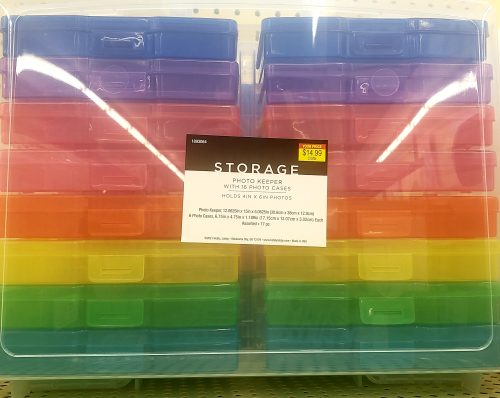
Photo savers make great seed packet storage
The other reason I’m organizing and taking inventory of my seeds now is that I’m harvesting foods from which I can take the seeds and save them for next year. For example, my peppers, pumpkins, tomatoes, corn, and squashes are all being harvested now.
If you are saving seeds you are going to want to Take care that they are completely dried before before storing them. Otherwise you will potentially end up with moldy seeds.
As a side note, tomato seeds are contained in a kind of gel-like sack that by nature has growth inhibitors which keep the seeds from sprouting within the tomato. So if you are going to preserve your tomato seeds, you can can remove the gel covering by letting the fruit rot and ferment.
In nature this happens automatically when the fruit falls off the plant. In fact I don’t know about you but I tend to get more volunteer tomato plants than any other kind. But you can speed up the process by fermenting tomato seed.
Now you can exclusively save your own seeds or you can choose simply to purchase more. I know of one woman who has been saving her pepper seeds year after year all from a pepper that she bought in the grocery store.
I do both. I love to save the seeds from extraordinarily good fruit, but I also like to have backup and so I purchase new as well.
When it comes to saving your seed your best bet is to save from open-pollinated plants. These would be your heirloom vegetables that have been saved and grown for years, sometimes decades, by the gardener that preserved it. I know of people who have seeds that came originally from their grandparents’ plants.
By contrast, a hybrid comes about when two plants cross-pollinate. Hybrids are created to produce a plant that has the best features of both parent plants. This can happen in nature as well as synthetically. The problematic part of hybrids is that they often do not reproduce with identical desirable qualities of the parent plants, and sometimes do not reproduce at all. I experienced this one year when I tried to grow my favorite hybrid corn. It turned out to be a dismal failure!
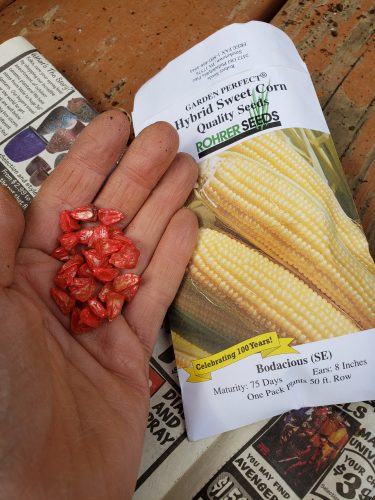

Hybrid seed can be problematic for future growing
Sometimes the hybrid plant will grow well and produce a lovely-looking fruit, but you’ll find the taste is far different, even bitter, than the original.
And another random tip that I did not know until I started gardening is that while many seeds can be saved for anywhere from two to six years on average, onion seed generally is not viable longer than a year.
When I garden, diversification is my theme, both in species of plants and how I grow them, be it in containers or in the ground, but also in seed preservation and purchasing of new seed. I find the relative cost of new seeds is so comparatively reasonable that it isn’t some huge investment that I won’t outlay a couple dollars for. In fact most of the seed I purchase costs less than a cup of coffee. When you are talking about having a harvest that will feed a family for a year potentially, that to me is a worthy budgetary investment.
But the strongest prompting for my seed inventory and organization is the realization that there might be difficulty in getting some of the seeds I want in the future. For example, one of my favorite seed companies actually closed its doors – temporarily, not permanently – in 2021 because they were overwhelmed by demand. Everybody got through 2020 and had an epiphany of the need for growing their own vegetables, and they sold out. It wouldn’t be too far-fetched to see something similar happen again.
And, we remember that there were other seed shortages back in 2020, but the reason was of a more sinister nature. Certain political figures forbade their sale, which sparked outrage and disbelief among the public. Again, If it happened once it could happen again.
Now the fun part of all this after you see what you need and decide what you’re going to save and what you’re gonna order, is the organizational part. There are just a variety of ways to creatively save seeds and store them, and deciding how you’ll go about this can ignite the latent artist in you.
If you don’t really care to get creative or if something simple works best for you, that’s totally fine as well. The important thing is that the seeds are kept in a cool dry and dark place that critters can’t get into or that you won’t have issues with light or light or moisture causing your seeds either the Germany early or to rot. Up until now I have saved my seeds in a simple file system which which includes a plastic bin, alphabetically ordered. I have my edibles in the front and in the way back, also categorized alphabetically, are medicinal and cooking herbs along with pollinators.
As my seed storage has expanded I am looking to change that, however. One of the ideas that works best for me I found is saving my seeds in a photo album. The clear slips in the album make it easy to see what I have and the pages is facilitate quickly going through my inventory.
Another similar idea is using a photo saver. I saw these the other day at Hobby Lobby. And the hard plastic photos savers make it easy to store several packets in one case.
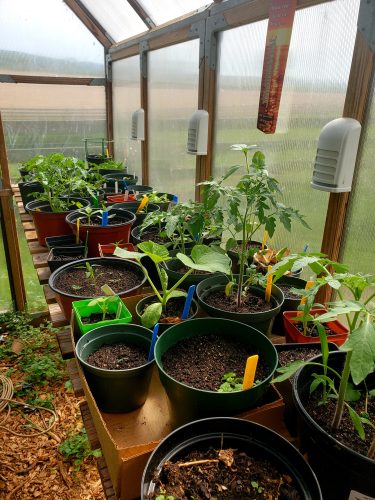
Using a cold frame or greenhouse will extend your growing season
Old Spice containers Make an attractive way to store seeds. You can repurpose boxes or pill boxes. Storing your seeds in plastic baggies and then just organizing them in a basket is totally fine. Some people store their seeds in the refrigerator or in the freezer and that works fine for them. Again you have to watch Humidity. If you are opening and closing the door a lot the humidity can become an issue.
One organizational idea that tempted me but I opted not to spend the money on was a super cute apothecary cupboard. Again, I spotted one of these at Hobby Lobby. If you know what I’m talking about these are the little curios or chests that have all the small drawers in them that doctors and pharmacists used in the olden days to store their medicines.
And finally, one of the super fun ways to store seeds – if you have this around or if you want to check out your local antique store – is an old 8 track case. The compartments for storing the 8 tracks are perfect size to hold your seed packets.
However you decide to organize and proliferate your seeds, my encouragement to you is not to wait. Most people delay until late fall or winter or even the following spring to think about what they are going to plant. With everything going on in the world I think it makes all the sense to take care of preparing this now. And honestly, it’s a lot of fun. So why wait?
Happy homesteading, friends!
